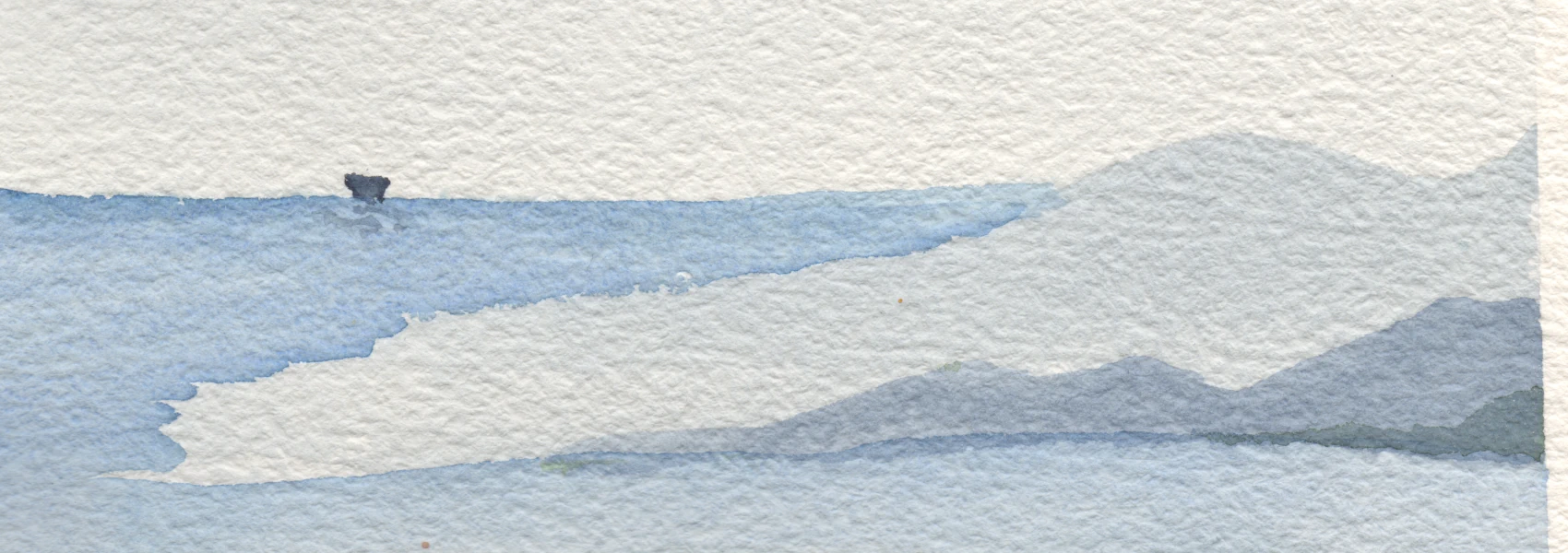Imaginary lands and seas
by
Last weekend, I took a watercolor class at Case for Making. I waffled a bit if I should sign up for the class after I had already spent so much money on upgraded supplies, but ultimately decided that a 3-hour in-person class focused on the landscapes I keep trying to paint would be worth it. It was soooo worth it. I picked up a ton of technique, philosophy, and practical tips, too. The artist who taught the class, Dave Muller lives in San Francisco and taught us techniques specifically suited to painting the misty, hazy, and kind of muted colors we get here.
Every book and video about watercolor advises to avoid overworking the piece. But what does that really mean and how do you avoid it? Seeing a demo and also having a teacher give real time feedback like "You might be getting tempted to keep doing more and more to your painting, but perhaps it's time to stop," helped learn when it might be happening. One simple tip to avoid overworking? Paint multiple pieces at once, and as you wait for the layer on one piece to dry, go to the next. That was genius for me. If I'm in the mood to paint, I want to paint! I'm not going to sit there and watch paint dry. I am, however, perfectly happy to start another painting while I wait.
I also went into the class with the intention that I would learn whatever I could and practice the techniques as instructed even if it seemed to go against what I thought made sense. That was the right attitude. As I look at the exercises from the class and compare them to the things I painted the week before, when I already had upgraded my paints, I'm amazed by the difference. Just a little bit of technique makes a huge difference.
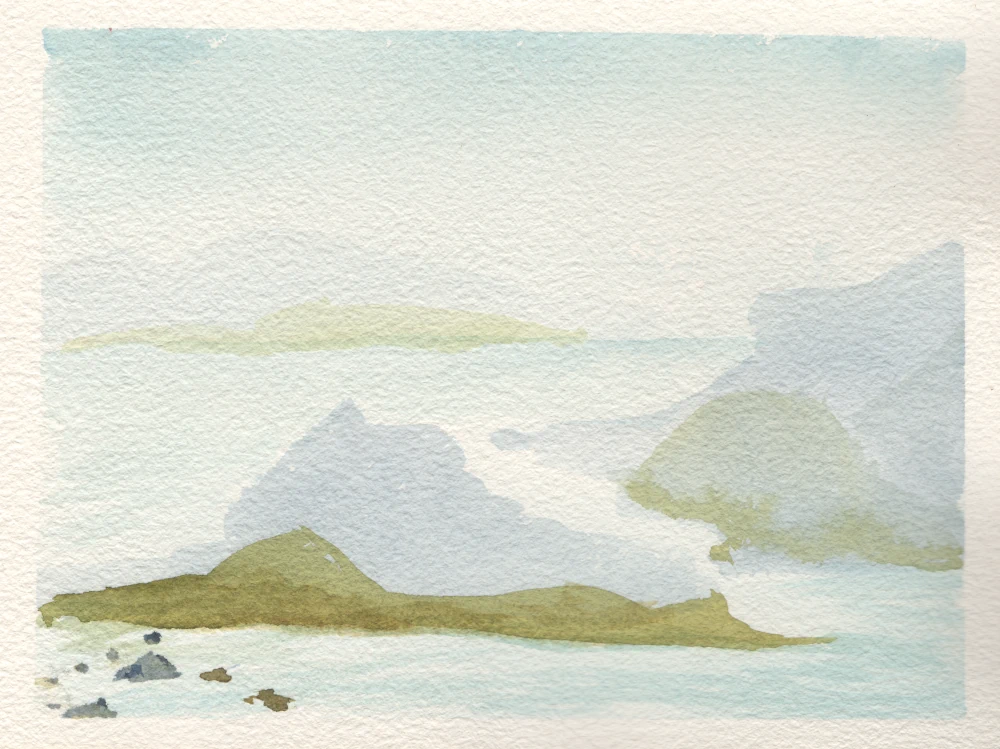
I started with some kind of light blue wash, something with a lot of cerulean, and slowly built up the coast. I had a different kind of rock when I started but it came out however it did.
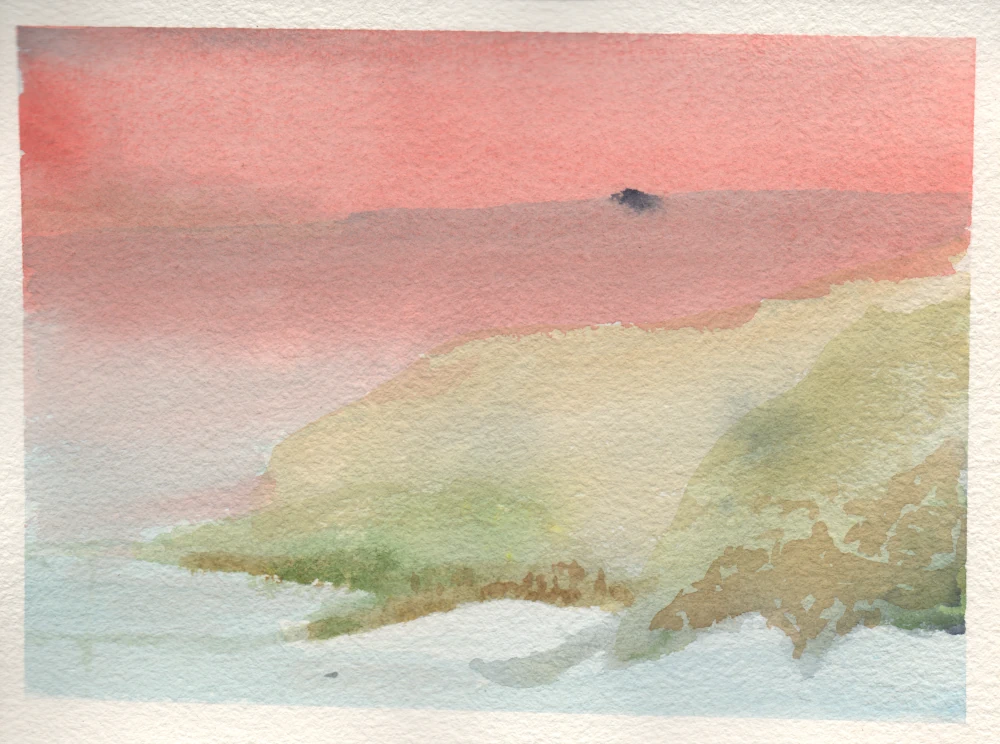
I really didn't like how this one came out at first. At a certain point the instructor said, you can do something kind of extreme if you'd like, and totally change one of your paintings. You can paint the sky a strange color like, like brown or red, or whatever you like. Go ahead, choose one of the paintings you like least and try it. So I did that and now coming back to it, I think it might be one of my favorites exactly because the sky is so strange.
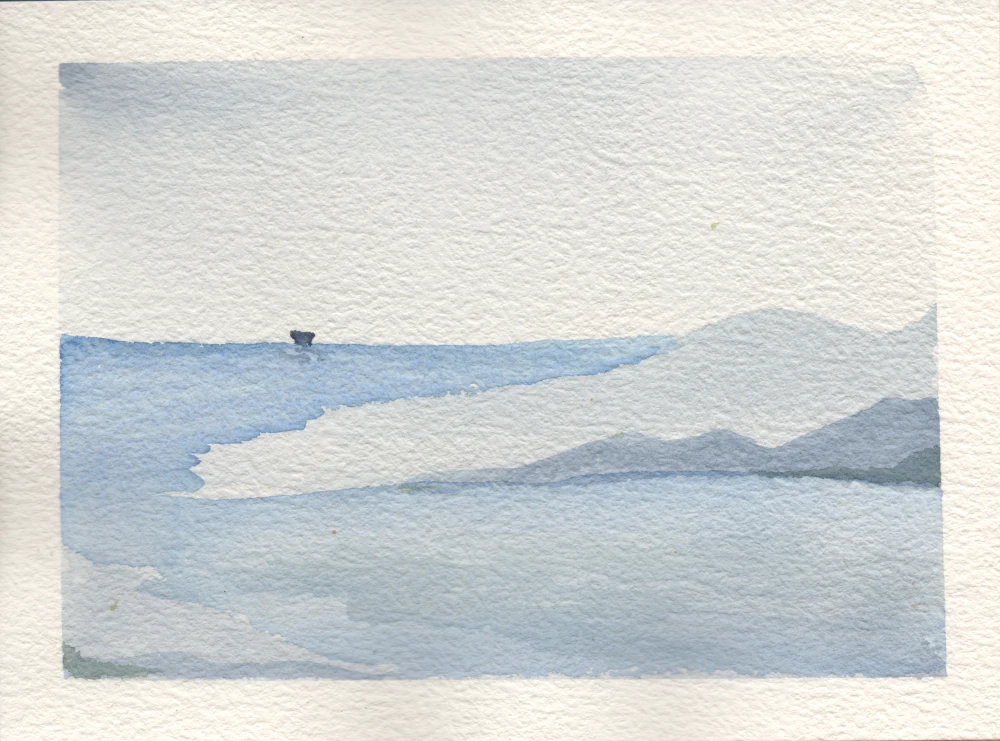
I think this might have been the first one I started, although I was rotating through all of them throughout the class. I decided I liked the monochromatic look, and stuck to pretty much just indigo. Maybe I added a little ultramarine. But mostly it was indigo of different values. Values means how intense the paint is, or put another way, how much you dilute it with water. I like this one, too. Sometimes the pacific ocean feels like this, especially as the evening comes on.
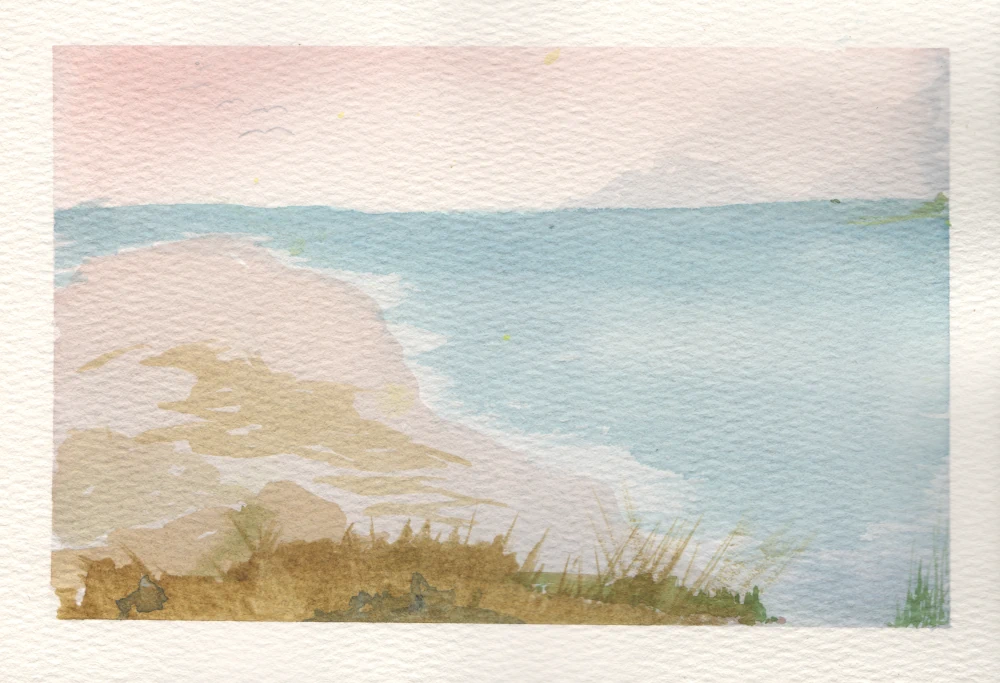
I made a pink sky here, and I like how that came out. My favorite thing about this one was how I got these scrubby bits of dune grass in the foreground. I was able to borrow some interesting flat brushes and very fine round brushes from the class supplies, and the grasses are mostly the edge of the brush.
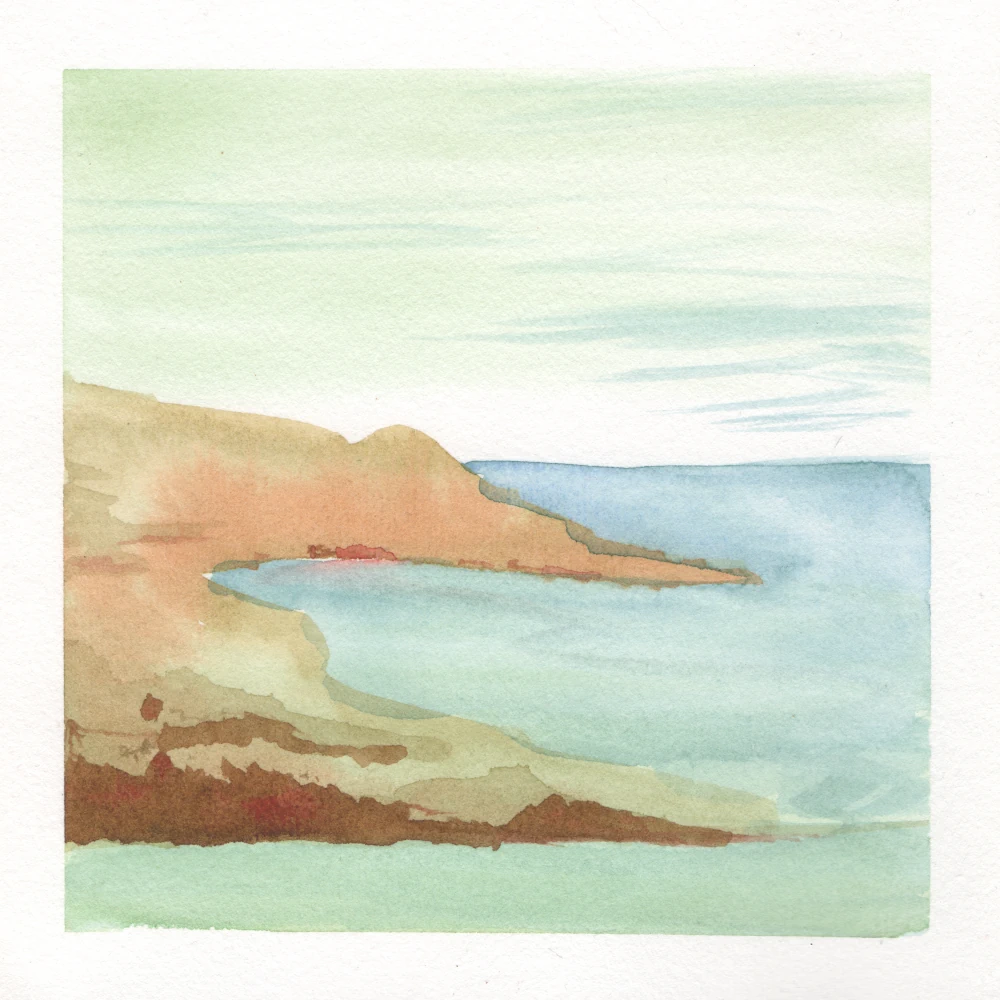
This last one was a bonus painting. I was waiting for all the others to dry and needed something to keep my hands busy, to keep from overworking. I did all of this one very quickly, very carelessly. And yet I think it's probably my favorite overall. I got a very cool sky. The land shape feels like it has some real dimension to it. One of the interesting things about watercolor is that slow, careful movements don't necessarily produce the best effects. Yeah, there's skill and technique, but when you actually paint, moving quickly, fluidly and being kind of relaxed produces the best results. That's part of why it's so enjoyable. You basically have to loosen up and give up control to paint with watercolor.
Right after the class, I went out and made two little paintings from life applying the techniques I learned. I don't know where I put them so I'm not going to scan them today. I can't wait to go out again this weekend and try some more. I particularly want to try to get some of those hazy, layered hills.
